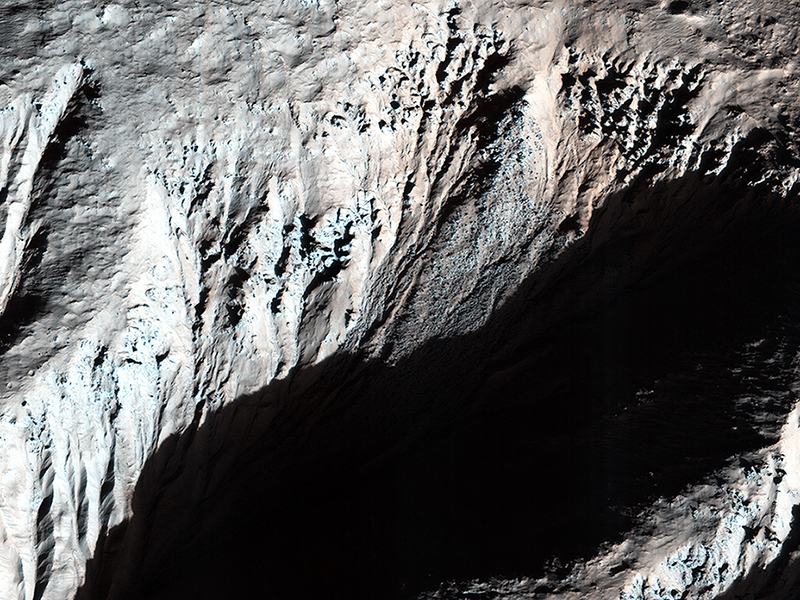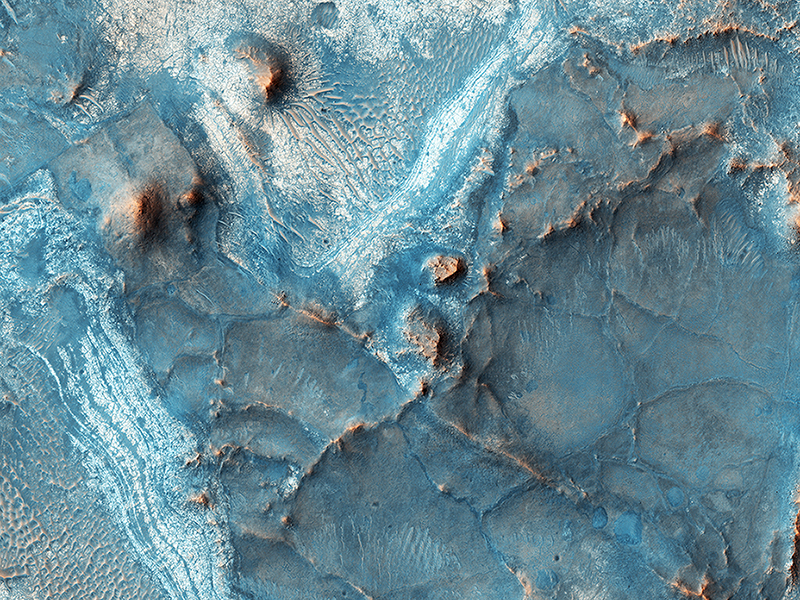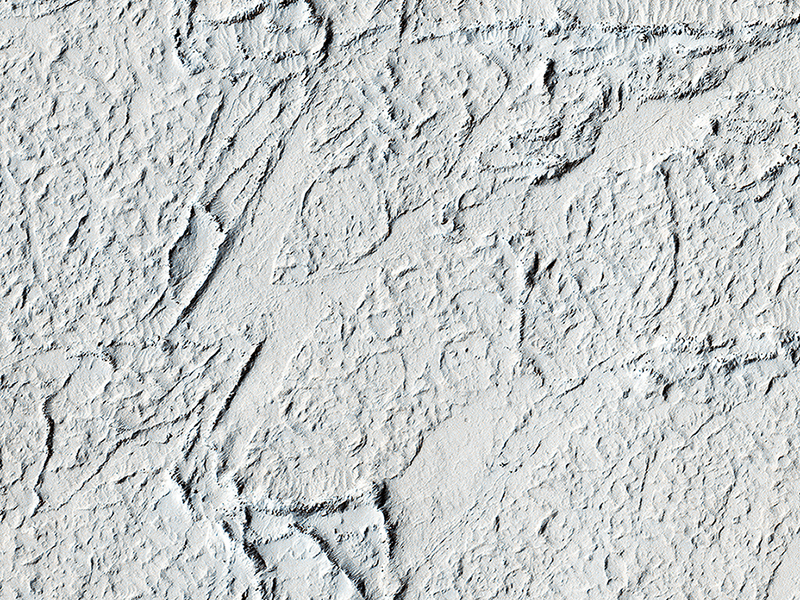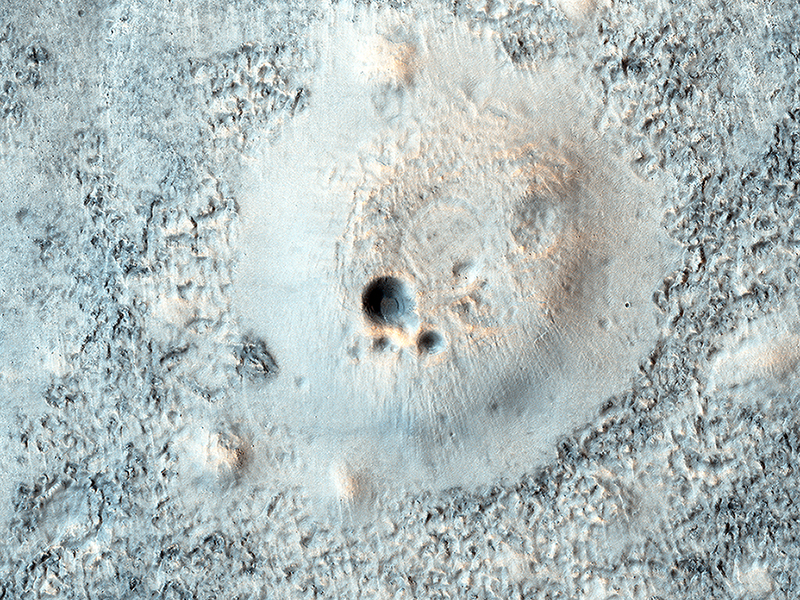Alfred McEwen wrote:Gullies with Dramatic Lighting (ESP_044514_1315) (HiClip)
This image was acquired to look for frost on these generally equator-facing slopes, which are visible in the shadows after enhancing the brightness levels. It is also a dramatic image given the low-sun illumination.
The color cutout has north down (illumination from the right side) so that downhill is down.
Alfred McEwen wrote:Many Fantastic Colors (ESP_044662_2010) (HiClip)
The Nili Fossae region, located on the northwest rim of Isidis impact basin, is one of the most colorful regions of Mars.
The colors over many regions of Mars are homogenized by the dust and regolith, but here the bedrock is very well exposed, except where there are sand dunes. The rocks also have diverse compositions, which produce different colors in HiRISE infrared-red-blue color images.
This region is ancient and has had a complicated geologic history, leading to interesting structures like layered bedrock, as well as other compositions.
This is a stereo pair with ESP_044095_2010.
Alfred McEwen wrote:Flood Lavas and Mass Extinctions (ESP_044671_2050) (HiClip)
This entire landscape is covered by lava flows. Almost all of vast Amazonis Planitia is covered by lava flows, an area comparable to that of the entire continental United States.
Amazonis Planitia is also one of the flattest places on Mars, because of the thick lava fill. Most of this lava was likely erupted in relatively short periods of time, perhaps thousands of years. Earth has also experienced relatively short-lived pulses with very high lava eruption rates, and these pulses precisely match the dates of four mass extinction events and a dozen of so smaller extinction peaks.
A mass extinction is when more than 75 percent of the species of life on the planet are completely killed off, never to return. On Earth, such high eruption rates release gases such as carbon dioxide that acidify the oceans, probably leading to the extinctions. The study of Mars and other worlds will help us to understand the processes causing high eruption rates.
Colin Dundas wrote:Cratered Cones in Acidalia Planitia (ESP_044745_2210) (HiClip)
This image shows part of a broad plain covered with cratered cones and domes in the Northern lowlands of Mars.
These cones are typically lighter and smoother than their surroundings, and also have different colors. One possible explanation for these features is that they formed as mud volcanoes. In a mud volcano, wet mud is pressurized and then erupts onto the surface. This can take a variety of forms, depending on how wet and fluid the mud is. On Mars, such processes might be related to the giant outflow flood channels, which deposited sediment on the plains.
Credit: NASA/JPL-Caltech/University of Arizona
<< Previous HiRISE Update



